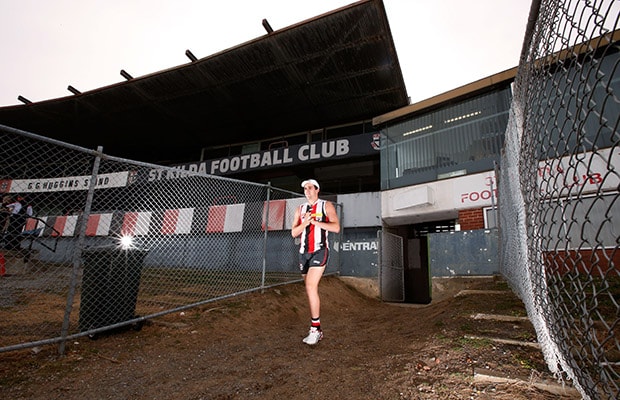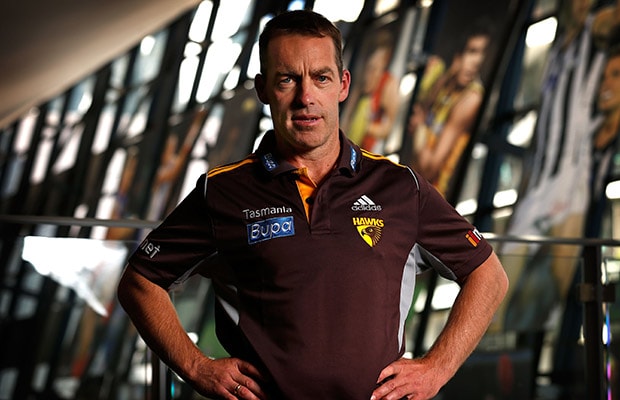IT WAS shaping as the best Christmas ever for Port Adelaide, with Travis Boak, Robbie Gray and Chad Wingard each committing to new deals with the club on the very eve of the festive season.
They swung for the fences, the Power, in terms of their contract extensions, but in the end they didn't quite get there, with Ollie Wines putting off his negotiations to next year.
So now they're stuck at third base and that feeling of dread engulfs the Power, the same as that experienced by Geelong in 2011, Hawthorn in 2013 and Adelaide last season as a big name player seems poised to walk out the door.
Only in the case of Wines, it doesn't appear anywhere near as obvious that he might leave. He's from Victoria, but from rural Echuca, so there is no obvious homecoming to Melbourne and one of the nine clubs based there.
His body of work as a tough, inside midfielder over 62 games in three years is impressive and you would imagine each of those clubs – not to mention every other club as well – will be crunching the numbers furiously to see how he would fit in their salary structure going forward.
Hawthorn will head the speculation, because, well, the Hawks are now linked to every big name free agent. It also makes sense because generational change is coming to the Hawthorn midfield in the next 12 months. Wines would be perfect.
And then there's Melbourne, where he would join best mate Jack Viney, and to where he should have been drafted in the first place. Indeed, the man the Demons took instead with pick No.4 in 2012, Jimmy Toumpas, has joined Wines at Alberton Oval for next season.
But the hope and the expectation is that he remains at Port Adelaide. Never mind the hiccup this year, it has been exciting to watch Port's ascension under Ken Hinkley, from the tarp-covered seating bays at AAMI Stadium to the sell-outs at Adelaide Oval, and the run-and-gun game-plan he has brought the club.
The other consideration for Wines is that he shapes as a future captain. The dollars on offer will be dazzling for Wines, but the smarter decision will be to stay put.
Marching home
The Saints aren’t the favourite club of this column, but they are the local club and there was a real buzz through Melbourne's southern corridor last weekend with the news St Kilda is moving back to Moorabbin.
They should never have left in the first place and there is bemusement among Saints fans that Archie Fraser, the St Kilda chief executive who engineered the move to Seaford, departed the club shortly afterwards.
Seaford and its "off the beaten track" location worked well enough during the Ross Lyon "bubble" era, but for a club that has since been looking to re-engage with its heartland and become a destination club, it was so clearly the wrong location.
Moorabbin cuts a pretty desolate scene now, but given what's planned over the next 18 months it will become the football hub that part of Melbourne sorely needs.
And it's not just the local supporters who will welcome back the Saints. Traders along the fashionable Bay and Church street retail strips in Brighton will also be happy, particularly the café owners. The cashed-up and hungry St Kilda boys were among their most fervent and loyal customers whenever they had a break from the club.
There was no waiting for a table at the fashionable Pantry when the Saints needed their eggs and coffee.
New meets old as Paddy McCartin steps out onto the oval at Moorabbin. Picture: AFL Media 
Clarko's call to arms
Annual general meetings are usually perfunctory affairs in the yearly cycle of an AFL club.
It is a night when the diehards – and really, only the diehards choose to attend such things – get the chance to grill the president or the chief executive.
What they usually are not, is the location for a call to arms by the senior coach. Yet for the 300 or so fans in attendance at the Hawthorn's AGM on last week, that is what they got.
Whether it was pre-meditated, or he spoke up in response to a member who had just vented heavily about the Tasmanian deal and a perceived flaw with Hawthorn's fixture, the members were treated to a 10-minute spiel from Alastair Clarkson that was spell-binding.
One Hawk insider said it was one of the best addresses he had heard from Clarkson and he has been privy to plenty over the years.
The crux of the speech was about the stability enjoyed by the Hawks, starting with the board and flowing through to the administration, the coaching group, players and staff. Success, he explained, came through stability and the Hawks have it in abundance.
Clarkson said the Hawks didn't move home games to Tasmania or abandon Glenferrie for Waverley as he said, "to piss off the supporters".
The coach's message to the members was that hard decisions have and will continue to be made at Hawthorn, particularly with several of the club's all-time greats needing to be sent off into retirement in the next few years.
It was a "call to arms" in every respect and while the announcement of his new deal to remain with the Hawks wasn't forthcoming on the night, nor has it been since, he did pretty much lay out a blueprint for the next few years.
The Hawks might be entering a period of transition that includes a move to a new base in Dingley, which will cost the club a lot of money. But Clarkson also made clear that such a transition won't stand in the way of the goal of winning still more premierships.
Those who ask why Clarkson wants to remain with Hawthorn when new and perhaps more lucrative challenges are out there for him, now have their answer.
His address to Hawthorn's annual general meeting showed the fire still burns for Alastair Clarkson
Leave the rules alone
For years this has been the stock-standard answer from players in their AFL Record pocket profile when asked if there was one thing they would like to change about the game.
The League had long announced that the sub rule would be scrapped and that the competition would revert back to four on the bench and with 90 interchanges permitted per match.
The year's final meeting of the AFL Commission earlier this week didn't sign off on any more rule changes, but did tighten up interpretations of dangerous tackles, the protected area around the mark, boundary line play and third-man up tactics at ball-ups and throw-ins.
And there was little reason to quibble about any of them.
But what does bear watching in 2016 is the SANFL's adoption of a rule, introducing a free kick to the opposing team if the ball goes out of bounds from a handball or kick without being touched first by another player.
It is not so much a radical new rule as the reintroduction of one that different football competitions have adopted at various stages over time.
There is so much grey area in footy when it comes to deliberate out of bounds, as well as delay-of-game tactics when the ball hugs the boundary, that the SANFL idea is worthy of merit and our attention.
And if it trims even a couple of minutes off games that have become interminably long, then that is also a good thing.
After The Siren will return for 2016 on February 21.


